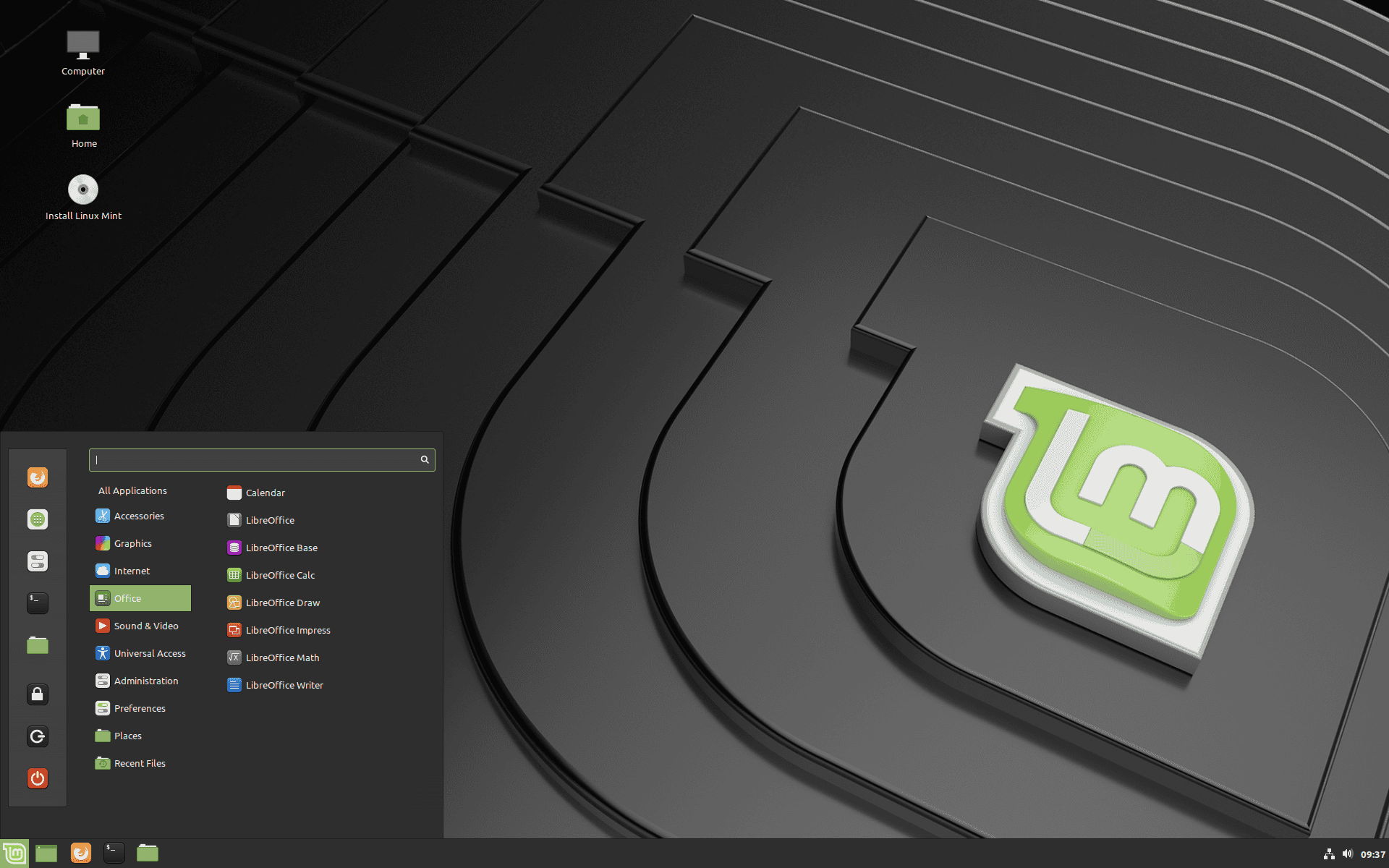Over the years, the popularity of desktop Linux has been steadily increasing, now reaching a milestone of over 4% market share. This growth can be attributed to several factors that have made Linux a more appealing choice for users around the globe. With nearly 33 years of development, Linux has undergone continuous improvements and updates, resulting in a more user-friendly and accessible operating system than ever before.
One key factor contributing to its rising popularity is the expanding number of user-oriented applications and distributions available for Linux. This variety has made it easier for a wider range of users to adopt the platform, catering to diverse needs and preferences. Furthermore, recent technological advancements, including more efficient resource management and better hardware compatibility, have enhanced the overall Linux experience.
Why Linux Is Gaining Traction
Linux has been steadily gaining popularity in recent years, making inroads into the market share of both Windows and macOS. This open-source operating system offers a compelling alternative for users seeking greater control, flexibility, and cost-effectiveness.
Cost-Effectiveness
One of the biggest advantages of Linux is its cost. Most Linux distributions are completely free to use, unlike Windows, which requires a license fee. This makes Linux an attractive option for budget-conscious users, businesses, and educational institutions.

Enhanced Security
Linux is known for its robust security features. Its open-source nature allows for greater scrutiny by a large community of developers, leading to quicker identification and resolution of security vulnerabilities. The user structure and permission system in Linux also provide a strong defense against malware and unauthorized access.
Flexibility and Customization
Linux offers a high degree of flexibility and customization. Users can choose from a wide variety of distributions, each with its own desktop environment, applications, and features. This allows users to tailor their operating system to their specific needs and preferences.
Improved Performance
Linux is often praised for its performance, particularly on older hardware. It can run smoothly on systems with limited resources, making it a great choice for reviving older computers or running resource-intensive applications.
Strong Community Support
Linux boasts a large and active community of users and developers. This means there’s a wealth of online resources, forums, and support channels available to help users with any problems they may encounter.
Growing Software Availability
While the software library for Linux was once considered limited, it has grown significantly in recent years. Many popular applications, including web browsers, office suites, and creative tools, are now available for Linux. Additionally, compatibility layers like Wine allow users to run some Windows applications on Linux.
Increased Adoption in Servers and Cloud
Linux has long been the dominant operating system in the server and cloud computing space. Its stability, security, and open-source nature make it an ideal platform for these environments. This widespread adoption in the server space has contributed to its overall growth and familiarity among developers and IT professionals.
Linux vs. Windows vs. macOS
| Feature | Linux | Windows | macOS |
|---|---|---|---|
| Cost | Free (most distributions) | Paid (license required) | Included with Apple hardware |
| Security | High | Moderate | High |
| Customization | High | Moderate | Limited |
| Performance | Generally high | Can vary depending on hardware | Generally high |
| Software | Growing library | Largest software library | Large, but focused on Apple ecosystem |
| Open Source | Yes | No | No |
Linux’s growing popularity can be attributed to its numerous advantages, including cost-effectiveness, security, flexibility, and performance. As more users discover the benefits of Linux, it is poised to continue its rise in the operating system market.
Reasons Why Desktop Linux is Growing
| Rank | Reason | Description |
|---|---|---|
| 1 | Increased User-Friendliness | Many distributions are now beginner-friendly, with intuitive interfaces and user-friendly installation processes. |
| 2 | Improved Software Availability | The rise of containerization formats like Flatpak and Snap has made it easier for developers to create and distribute software for Linux, leading to a wider variety of applications available. |
| 3 | Gaming Advancements | Steam Play allows users to play many Windows games on Linux through Proton, and growing support from developers is improving the Linux gaming experience. |
| 4 | Open Source and Customization | Users have full control over their system and can customize it to their specific needs and preferences. |
| 5 | Cost-Effectiveness | Linux is free to use and distribute, making it a budget-friendly option for individuals and organizations. |
| 6 | Security and Privacy | Linux is generally considered to be more secure than other operating systems due to its open-source nature and active community development. Additionally, users have more control over their privacy settings. |
| 7 | Hardware Compatibility | Linux is compatible with a wide range of hardware, making it a viable option for older or less powerful computers. |
| 8 | Ethical Considerations | Some users prefer Linux due to its focus on open source and user freedom, which aligns with their personal values. |
| 9 | Community Support | There is a large and active Linux community that provides support and resources to users of all levels. |
| 10 | Growing Awareness and Adoption | As more people become aware of the benefits of Linux, its adoption rate is steadily increasing. |
Key Takeaways
- Desktop Linux has seen a steady increase in popularity, hitting over 4% market share
- The availability of user-friendly applications and distributions has attracted more users
- Technological advancements have significantly improved Linux’s performance and compatibility
Historical Perspective
Evolution of Linux
Linux, as an operating system, has been in development for more than 30 years. Its creator, Linus Torvalds, started working on it in 1991. Linux initially began as a server operating system, but it has evolved significantly over time. The continuous efforts of the open-source community have aided in enhancing its functionality and user experience, leading to its current widespread use on desktop computers.
Comparison With Past Trends
In the past, Linux struggled to gain a significant market share on desktop computers. One major reason for this was the lack of user-friendly applications and features compared to other operating systems like Windows and macOS. In the earlier days, Linux was more favored by developers and power users due to its flexibility and customization options.
However, in recent years, the open-source community has been proactive in developing user-friendly versions of Linux, like Ubuntu and Fedora. This has helped bridge the gap between Linux and other popular desktop operating systems.
StatCounter data shows that Linux has experienced a steady growth in market share. In June 2023, Linux reached a milestone with a 3% desktop market share. More recently, desktop Linux has crossed the 4% mark, further signifying its increasing popularity.
Rise in Desktop Linux Use
Several factors have contributed to the growth of Desktop Linux, and they include:
- Ease of use: Modern Linux distributions have made significant improvements in user interface design, making them more accessible to a wider audience.
- Availability of applications: The number of software applications compatible with Linux has increased, providing users with a variety of tools for their everyday computing needs.
- Security: Linux is known for its robust security, which appeals to users who prioritize privacy and data protection.
- Cost-effectiveness: Most Linux distributions are free, making them an attractive choice for users looking to save money on their operating system.
In conclusion, the rise in popularity of desktop Linux can be attributed to its evolution over time, improvements in user experience, growing application support, and favorable comparisons with past trends. The open-source community’s dedication to Linux has played a crucial role in driving this growth, and it’s expected that the market share of desktop Linux will continue to expand in the years to come.
Technological Advancements
Kernel Enhancements
The progress in Linux desktop popularity can be attributed to various technological advancements, one of which involves kernel enhancements. The Linux kernel, being the core of the operating system, has seen continuous improvements in performance, stability, and resource utilization. These advancements have made the system more accessible to a wider audience, allowing users to experience smoother and faster operation on their desktops.
Desktop Environments
Linux offers a variety of desktop environments (DEs) that cater to different preferences and needs. Popular choices such as GNOME, KDE, Cinnamon, and Unity provide users with unique visual styles and functionality. These environments are always evolving, introducing new features and improvements to the user experience. For instance, GNOME and KDE have focused on enhancing user interfaces, making them more appealing and easier to use. Cinnamon, on the other hand, has striven to maintain a classic aesthetic while incorporating modern features. The diversity of DEs ensures that there is something for everyone and enables users to customize their desktop experience according to their preferences.
Compatibility and Emulation
Over the years, compatibility and emulation tools have significantly improved, allowing Linux desktop users to run a wider range of software on their systems. Notably, WINE (Wine Is Not an Emulator) has played a crucial role in enabling Linux users to run Windows applications on their desktops. With the advancements in WINE and other compatibility tools, users have access to a wide array of software options without having to rely on a single operating system.
In conclusion, technological advancements like kernel enhancements, diverse desktop environments, and improved compatibility and emulation tools have significantly contributed to the growing popularity of the Linux desktop. These improvements have made Linux a more attractive and viable option for users, providing them with a robust, customizable, and feature-rich experience across various applications.
User Experience and Accessibility
Ease of Use
The increasing popularity of desktop Linux can be attributed to its growing focus on user experience and accessibility. Linux distributions such as Ubuntu, Debian, and Linux Mint have been working diligently to streamline their interfaces, making them more intuitive for newcomers and experienced users alike. This has resulted in a more accessible system, requiring less technical knowledge to navigate. Simple and clean designs have replaced the complex and sometimes daunting interfaces of the past, and this change has positively impacted user adoption.
Installation and Maintenance
In addition to ease of use, desktop Linux distributions have vastly improved their installation and maintenance processes. Linux is now compatible with a wider range of hardware, which eases installation for users with varying system configurations. Furthermore, software management has also been simplified, with built-in package managers providing one-click installation and updates. Linux distributions now come with pre-installed essential software, which saves users time and effort in searching for programs. These improvements have made installing, customizing, and maintaining Linux considerably more accessible for users of all skill levels.
Community Support
One major strength of desktop Linux is its strong community support. Linux users have access to extensive resources, such as forums, documentation, and online tutorials, that cater to both beginners and experienced users. This wealth of information helps users troubleshoot issues, optimize performance, and maximize the potential of their Linux systems. However, not only do these resources provide valuable assistance, but they also bring together a supportive community that fosters cooperation, sharing of knowledge, and continuous improvement of Linux systems. This community-driven focus not only benefits individual users but also contributes to the overall growth and development of desktop Linux.
Economic Factors
Cost of Ownership
One of the main economic factors contributing to the growth of desktop Linux is the low cost of ownership. Unlike other proprietary operating systems, such as Windows and macOS, Linux is open source, which means it’s free to use and distribute. This allows users to try multiple Linux distributions without worrying about the financial burden. Additionally, Linux is known for its efficient use of system resources, resulting in lower hardware requirements and longer device life spans.
Total Cost of Operation
When considering the total cost of operation, Linux comes out on top due to its lower maintenance expenses. The open source nature of Linux allows for a diverse community of developers to contribute and improve the software. This support translates into greater security and stability in the long term. Moreover, Linux distributions often have a more streamlined update process, which saves time and reduces downtime for users.
| Operating System | Hardware Requirements | License Cost | Maintenance Cost |
|---|---|---|---|
| Linux | Low | Free | Low |
| Windows | Medium | $$$ | Medium |
| macOS | High | $$$ (Requires Apple hardware) | High |
Business Adoption
The open source model of Linux has also made it an attractive choice for businesses, particularly in the cloud computing sector. Companies such as IBM, Google, and Microsoft have adopted Linux to power their cloud services, like Azure. By leveraging the power of Linux and its supportive community, businesses can develop cost-effective solutions and easily adapt to technology changes. Furthermore, the flexibility of Linux allows for diverse use cases, from running servers to powering IoT devices.
Overall, the growing popularity of desktop Linux can be attributed to various economic factors, such as reduced ownership costs, lower total costs of operation, and increased business adoption. These aspects contribute to a more accessible and financially viable option for users and organizations alike.
Cultural and Societal Shifts
Shift to Open Source
One reason for the growing popularity of desktop Linux is the increasing shift towards open-source software. Open-source refers to software with source code that is publicly available, allowing anyone to view, modify, and distribute it. Users feel empowered by being able to contribute to and improve the software they use. Notable open-source software projects such as LibreOffice and Google Docs have gained momentum in recent years. This trend fosters collaboration and drives innovation, making the open-source ecosystem flourish.
Privacy and Security Concerns
In an age where privacy and security are crucial, the Linux operating system stands out from its competitors. Linux puts emphasis on privacy and data protection, making it a preferred choice for security-conscious users. They value that Linux does not have the same level of data collection found in Windows and macOS systems. Furthermore, Linux’s open-source community constantly polices and addresses any discovered security vulnerabilities, providing regular updates and patches. This aspect of Linux helps build trust in its user base.
Global Software Collaboration
Linux’s open-source nature sparks collaboration on a global scale, attracting developers from diverse backgrounds and skill sets. Since the code is open to contributors worldwide, it enables constant refinement, leading to better software and features. Linux users benefit from the united efforts of this global community, resulting in a more adaptive and flexible operating system.
The growth in desktop Linux’s popularity can be attributed to cultural and societal shifts. As our world moves more towards valuing open-source software, privacy, and global collaboration, Linux is poised to continue gaining users who appreciate its strengths.
Growth in Related Sectors
Cloud Computing
The rise in cloud computing has played a significant role in increasing the adoption of desktop Linux. As more companies embrace cloud-based solutions, they also adopt Linux servers to run their applications. This means that IT professionals are required to be familiar with Linux, prompting them to use Linux desktops for their workstations. Moreover, affordable and user-friendly distributions like Ubuntu have made it easy for users to get started with Linux in the cloud.
IoT and Device Integration
Linux has become a popular choice as an operating system for the Internet of Things (IoT) devices, which has contributed to its increased popularity in desktop environments. This is because IoT devices often require lightweight and versatile operating systems capable of running on limited resources. Linux distributions like Raspbian, for example, are widely used in Raspberry Pi devices. As the demand for IoT solutions continues to grow, developers have turned to Linux desktops to work seamlessly with their devices.
Gaming Industry
Long known to lag behind Windows in the gaming realm, Linux has picked up pace with the support from gaming platforms and game developers. Steam, a dominant distribution platform for PC gaming, provides native support for Linux. This has attracted more gamers to adopt Linux desktops. Additionally, popular Linux hardware companies like System76 have launched gaming laptops, which has further boosted Linux’s growth in the gaming community.
In summary, the growth of desktop Linux can be attributed to its increasing presence in cloud computing, IoT applications, and the gaming industry. As more professionals and enthusiasts work with these technologies, the popularity of Linux will continue to rise, ensuring an ever-growing user base.
Regional and Demographic Adoption
Emerging Markets
Emerging markets, particularly in countries like India, have witnessed a significant increase in the adoption of desktop Linux. The affordability, open-source nature, and rising internet penetration rates have contributed to this growth. Furthermore, the increasing number of servers deployed globally is driving Linux market share expansion, with an expected market size of $15.64 billion by 20271.
Educational Institutions
Educational institutions have also been embracing Linux as a primary desktop operating system. The free and customizable nature of Linux makes it ideal for cost-effective implementation in schools and universities. The platform’s open-source philosophy aligns with the knowledge-sharing values in education. Many institutions offer Linux-based educational programs to build programming and development skills among students. As a result, all levels of education contribute to the growing popularity of desktop Linux.
Developer Communities
Developer communities have long been proponents of Linux in the desktop environment. Linux offers developers several advantages, which include:
- Flexibility and customization: Linux allows for a high level of personalization, catering to individual workflows and preferences.
- Strong command-line interface: Linux’s command-line interface provides an efficient way to perform tasks and manage systems.
- Security and stability: Linux usually offers better security and stability than other systems thanks to its architecture and frequent updates.
- Support for programming languages: Linux natively supports a wide range of programming languages, making it a natural choice for developers and programmers.
These benefits combined with a supportive global community of like-minded users fosters a strong sense of loyalty to Linux in the developer world.
Footnotes
-
Linux Statistics 2024 – TrueList. Retrieved from https://truelist.co/statistics/linux-statistics. ↩
Comparative Analysis
Linux vs. Windows
Linux and Windows are two of the most popular desktop operating systems. One of the main reasons for the growing popularity of Linux is its open-source nature, making it available at no cost for users and allowing for community-driven development. In contrast, Windows is a proprietary operating system, and users must pay to use it.
In terms of performance and stability, Linux often has an advantage due to its leaner structure and superior resource management. This makes it particularly suitable for older or lower-spec hardware. On the other hand, Windows has a much broader user base, which results in more software that is designed specifically for Windows.
Security is another area where Linux shines, as the open-source model allows for vulnerabilities to be found and fixed more easily. Moreover, since Linux has a smaller market share compared to Windows, it is less likely to be targeted by malicious software.
Linux vs. MacOS
MacOS is the operating system designed by Apple for use on their Mac computers, and like Linux, it is based on Unix. However, MacOS is closed-source and only runs on Apple’s hardware, making it less customizable and more expensive when compared to Linux.
Linux provides greater flexibility and customization options due to its open-source nature. Users can choose from many different distributions (distros) to suit their needs and preferences, while MacOS offers a more uniform experience.
Another key advantage of Linux over MacOS is the community support. The Linux community is vast and full of knowledge, offering support for various issues and new users.
Linux vs. Chrome OS
Chrome OS is a lightweight operating system developed by Google to power Chromebook devices. It is built on the Linux kernel, but significantly different in terms of user experience and functionality.
A primary difference between Linux and Chrome OS is the focus on web applications in Chrome OS. While Linux has a robust ecosystem of native desktop applications, Chrome OS relies mostly on web-based applications, making it less suited for some software.
System resources is another area where Linux offers more variety. Linux can be installed on a broader range of hardware, from low-spec systems to powerful workstations, whereas Chrome OS is generally limited to Chromebooks.
In summary, when comparing Linux with other operating systems, like Windows, MacOS, and Chrome OS, it becomes apparent that the open-source nature, increased customization, performance, and security are some of the key factors contributing to the growing popularity of Linux as a desktop operating system.
Challenges and Criticisms
Software Compatibility
One major challenge faced by desktop Linux is its software compatibility. While there are numerous open-source alternatives, popular software like Photoshop and AutoCAD are still primarily designed for Windows and macOS. As a result, users who rely heavily on these specific applications might be hesitant to adopt Linux as their primary operating system.
Although some applications can be installed through compatibility layers like Wine, it may not guarantee a seamless experience. Therefore, users who require specific software might find it difficult to transition to desktop Linux.
Hardware Restrictions
Desktop Linux has made great strides in the support of various hardware devices. However, it still faces issues with certain components, especially those that require proprietary drivers. Manufacturers might be reluctant to develop Linux-compatible drivers, limiting the hardware choices for users.
While some distributions like Red Hat and SUSE provide better hardware support thanks to partnerships with manufacturers, the overall hardware compatibility for Linux may still be less comprehensive compared to that of Windows.
Fragmentation Issues
Fragmentation is another issue that has long plagued the Linux landscape. Thousands of distributions exist, with different package managers, desktop environments, and feature sets. This variety makes it difficult for newcomers to choose the best platform that suits their needs.
Moreover, software developers face challenges in creating applications that can be used across multiple distributions. Distributions like Debian, Arch, and Fedora use different package managers (apt, pacman, and dnf, respectively), adding complexity for application developers and maintaining consistency.
In conclusion, while desktop Linux is growing in popularity, these challenges and criticisms should be addressed to further boost its adoption rate.
Future Outlook
Innovation and Growth Projections
The growth of desktop Linux can be attributed to many factors, including its stability, versatility, and the community-driven nature of its development. As the operating system continues to embrace innovation, the market share for desktop Linux is expected to expand. One key area of development is the integration of Artificial Intelligence (AI) and Machine Learning (ML), which can automate tasks and provide personalized user experiences. Another aspect of growth lies in the advancement of graphics and animations, which can attract more users who value eye-catching visuals.
Potential for Market Disruption
The rise in the popularity of desktop Linux has implications for the operating system market’s landscape. While Windows and macOS continue to dominate the majority of market share, Linux’s growth signifies a potential for market disruption. The open-source nature of Linux allows for greater customization and adaptability, which are highly sought-after features. Furthermore, desktop Linux’s lower system requirements and compatibility with older hardware make it an attractive option for cost-conscious users.
Industry Predictions
Experts and research firms have observed the growth of desktop Linux and predict further expansion. As Linux gains a larger share of the market, it becomes a viable option for the broader public. Many organizations are now considering Linux as a reliable and secure alternative to traditional operating systems. These industry predictions, supported by the impressive growth figures shown in recent reports (e.g., 4% market share reported by StatCounter and 3.77% by It’s FOSS), indicate a promising future for open-source desktop operating systems like Linux.
Frequently Asked Questions
What factors are contributing to the rise in desktop Linux adoption?
There are several factors behind the growth of desktop Linux. Firstly, it is a free and open-source operating system, making it highly cost-effective. Secondly, Linux offers a lightweight and customizable experience, which attracts many users. Additionally, an increasing number of software and hardware manufacturers are now providing support for Linux, making it a more viable option for a broader audience.
How does desktop Linux compare with other operating systems in terms of user experience improvements?
Linux has made significant strides in user experience over the years. It now has more user-friendly interfaces and offers easier installation processes compared to earlier versions. While Linux may still require some technical know-how, it has become more accessible and provides a competitive user experience when compared to other operating systems like Windows and macOS.
In what ways has the support for gaming on Linux influenced its growth?
Gaming support has played a role in the rise of desktop Linux. Platforms like Steam have increased their support for Linux, with a growing number of popular games now available for the operating system. This has attracted many gamers to Linux, who can now enjoy their favorite titles without needing to switch to another OS.
What role does open-source software play in desktop Linux’s increasing popularity?
Open-source software is at the heart of Linux’s appeal to many users. The open-source nature means that anyone can view, modify and distribute the operating system’s code, fostering innovation and a strong sense of community. Users benefit from a wide range of software options and can customize their systems to suit their needs.
How has the availability of Linux-compatible hardware affected the operating system’s user base?
The growth of Linux-compatible hardware has played a crucial role in its increased adoption. Companies like Dell, Lenovo, and System76 now offer laptops and PCs pre-installed with Linux, making it easier for users to obtain and use the OS. This increased accessibility to hardware has expanded the user base and lowered the barrier for entry.
What impact has the developer community had on the growth of desktop Linux?
The active developer community is an essential driver of Linux’s growth on the desktop. Developers continuously work on improving the operating system, tweaking existing features, and creating new ones. This dedication to constant improvement and the willingness to share knowledge and resources has been crucial in bringing new users to desktop Linux and has fostered loyalty among its existing user base.





